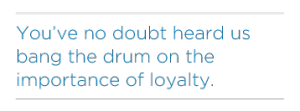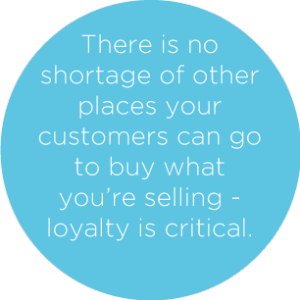
Apple’s iOS 10 updates are coming this fall — the public beta is now available for download, so the official release is likely closer than we think — and the host of changes will have a significant impact on mobile marketers. How can you be poised to take advantage of the changes when they launch? Here’s a quick primer.
SiriKit
This is one of the bigger changes. SiriKit opens Apple’s virtual assistant to developers, meaning they can build voice controls into their own apps. Siri will be able to order you a Lyft or Uber with a simple voice command.
Your move: Integrate your app with Siri as much as you can. It will help your product stay top of mind with consumers if they can call it up with a simple one-liner as they lie in bed on a weekend morning.
New Messaging Features
This one is pretty big, too. In an effort to compete with WhatsApp/Facebook Messenger, Apple added a variety of new messaging features in the iOS 10 updates:
- There’s an iMessage App Store coming. Users will be able to add third-party functionality to messaging (i.e. stickers and GIFs).
- Calendar scheduling and mobile payments. (More on the mobile payments in one second.)
- Powerful iMessage capabilities. Send full-screen messages, hand-written notes, ‘invisible ink’ messages that are only revealed if swiped by the recipient (a little Snapchat touch there), and a ‘Tapback’ functionality to quickly reply with a pre-set message. You can also easily replace words with emojis, i.e. “Going for pizza or burgers” becomes “Going for ? or ?.” Venmo, anyone?
Your move: As messaging functionality (and fun) continues to increase with iOS 10 updates, it’s time to consider investing more in SMS marketing. Coca-Cola, is wasting no time getting in on the action, as they’re poised to spend 70% of its mobile budget on SMS in the next fiscal year. It also means users want messaging that has the tone and feel of a personal message. Embrace emojis! ?
Mobile Payments
We’re arriving at a tipping point for the adoption of digital wallets, and the iOS 10 updates might push Apple Pay to the forefront.
in the U.S., we’ve had magnetic stripes on the back of our credit cards for a generation. But these days, chip technology is becoming more prevalent in the U.S. It’s called EMV, and most chip-card reading terminals can work with NFC, or near-field communications. NFC is a set of standards for portable devices. It allows them to establish peer-to-peer radio communications, passing data from one device to another by touching them or putting them very close together.
This new system supports contactless payment, which means a whole host of digital wallet options are opening up as the U.S. fully transitions to chip-based credit cards.
Your move: It’s a great time to adjust your app’s payment options. Digital wallets will foster ease of payment, and ease of payment could be huge for customer retention and acquisition.
Expedited app reviews
Currently the cycle takes about 4-10 days. With iOS 10 updates, the expectation is 1-2 days.While Apple still reviews about 100,000 apps/week, it’s devised a faster process. This means that from the point of submission, you could be ‘live’ in front of consumers within about 30 hours.
Your move: Have your ducks in a row for rollout before you submit your app, because it’s not a potential two-week waiting game anymore.
Revenue Splits and Subscriptions
Apps that use subscriptions will see a 70 (developers) / 30 (Apple) revenue split in year 1, and then in year 2, it will become 85-15. Subscriptions will now be available across allcategories, whereas previously it was limited to only a few.
Your move: Do subscription services make sense for your app? To qualify, you’ll need content that is updated or delivered on a regular basis — or you need to provide paid access to an ongoing service within the app, i.e. massive multiplayer online games.
Paid App Search
This will be new feature — but unlike Google AdWords, only one ad result will show at the top of keyword searches in the App Store. Mobile marketers can bid on keyword searches, but the competition for some might be very tight,and relevancy is going to play a key role here. Apple is apparently going to parse the app descriptions for relevance, which is the first time they’ve done that in any iOS release.
Your move: Write compelling, targeted descriptions of your apps if you plan to keyword-bid at any point.
Simple unsubscribes
iOS 10 Mail will offer simple unsubscribes from marketing list e-mails, which is a potentially great feature for users — and makes prioritizing permission-based subscription more important than ever for email marketers. The exact repercussions of this will evolve once iOS 10 gets out of beta, but standard email marketing approaches will become even more important. In essence: good subject lines, relevant content, and offers and personalized approaches that resonate with consumers.
So, where should you start?
This is a jumping-off point for your thinking about iOS 10, which will likely be live by the end of September. For now, we recommend brainstorming strategies around how to use messaging more effectively (one of the bigger changes) and utilizing SiriKit to integrate with the voice of the iPhone.
See Original Article Here














 -blocking technology in the upcoming release of iOS 9 puts the
-blocking technology in the upcoming release of iOS 9 puts the 






